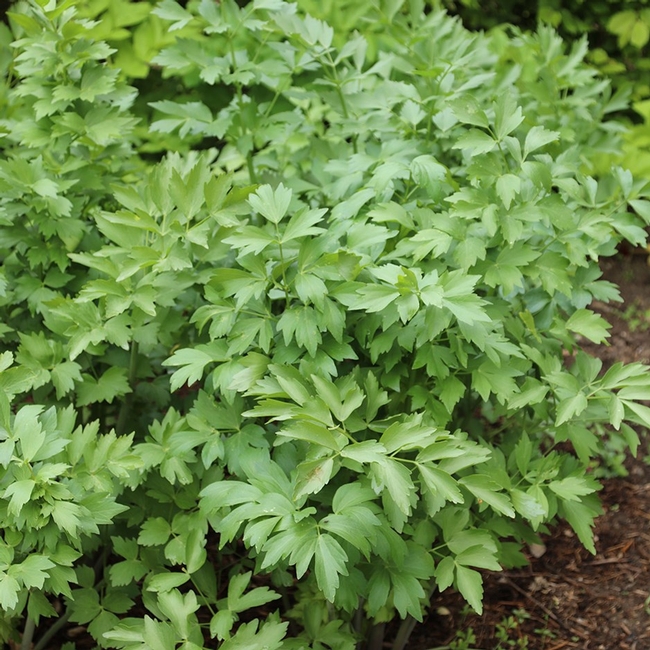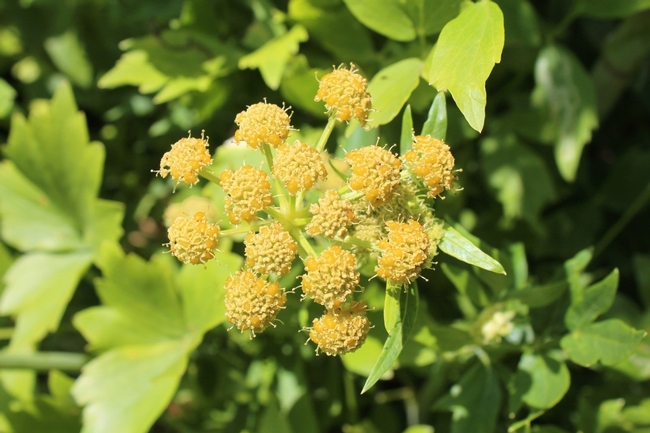It is spring, and I can hear Lou Rawls on the radio in my mind singing “You are going to miss my Lovage!” While not late in the midnight hour (baby), if you have ever had it and now lack it, you are missing lovage. Mine has yet to reappear from the winter rest!
Ever find yourself without that key ingredient for a special meal or drink? No celery, parsley, or cilantro for that 
Lovage is a tall perennial plant and is the only species in genus Levisticum (making it Levisticum officinale). European gardeners have long been familiar with this plant, using the leaves as an herb, the roots as a vegetable, and the seeds as a spice. The plant is suited well to our area/zone (3-9) and comes back after a dormant period from the ground, often being one of the first up. It can grow to 7' and may be used as a background border to any garden. It likes full sun but will tolerate partial shade while remaining a smaller version of itself when grown in well-drained sandy-loamy soils of 6.5 pH. Allow some room for this 32” wide plant. Lovage is a great companion plant for potatoes and other tubers.
This herb is loaded with vitamin C and several B vitamins. Leaves are used in various broths in comparable amounts to dill and parsley. Seeds can be substituted for fennel. Both uses provide a more intense flavor of the herb/spice.
The root is also edible. It contains furanocoumarins (as does grapefruit) and can lead to photosensitivity, so please take note. Some European countries use lovage dried root and seeds to flavor cabbage and cucumbers (quick pickling). It also provides a lovely flavor to bread and butter pickles!
Uniquely, the stem is rhomboidal and somewhat hollow – which allows for its use as a straw with your Bloody Mary at brunch. It can also be substituted for celery in bread stuffing or soup flavorings.
Plants may be generated from seed with significant effort (may require starting indoors – soil needs to be 60°F); however, the plant is available at many nurseries. It reseeds readily in and around the mature plant and may be shared with your friends as new plants emerge! Seeds will arrive in late summer from umbels of yellow flowers. In the United Kingdom, the seeds are used to produce an alcoholic cordial used with brandy for a winter drink. Seeds may also be used to flavor oils and vinegars.
Oh boy! The radio in my mind is now playing Gary Lewis and the Playboys “Love Potion #9”. While the recipe below doesn't “smell like turpentine” or “look like India ink”, it does produce a nice tea made from the lovage plant. Folklore can provide insight into so many of life's mysteries.
LOVE POTION #9: Grind one handful of dried lovage (blossoms, leaves, stems, and roots) to a coarse powder. Place one tablespoon of powder in a tea strainer and pour boiling hot water over the strainer in a cup. Steep for 15 minutes. Share with a close friend - and sip slowly!
While your lovage grows, take care to keep your eyes open for aphids and leaf miners. These are the primary pests of this beautifully delicious addition to your garden! Consider companion plants which deter/repel these pests – marigolds or chrysanthemums are good choices.